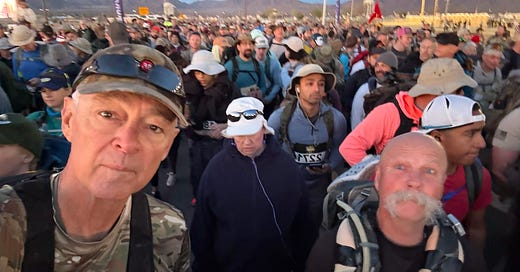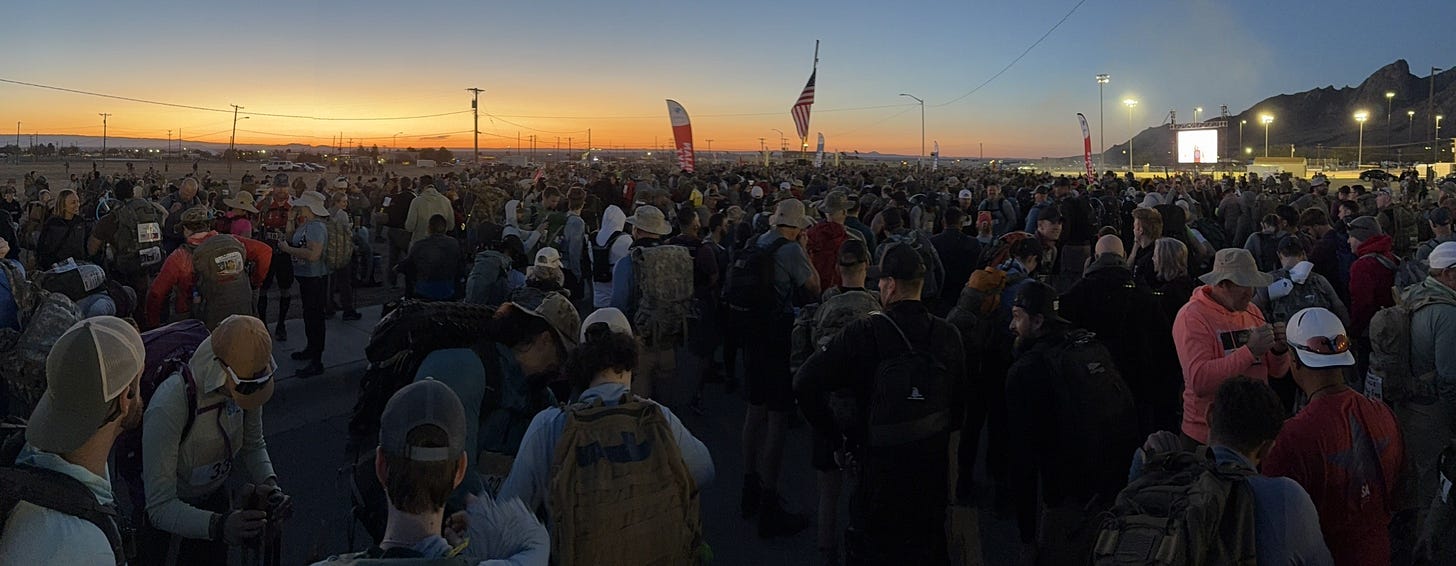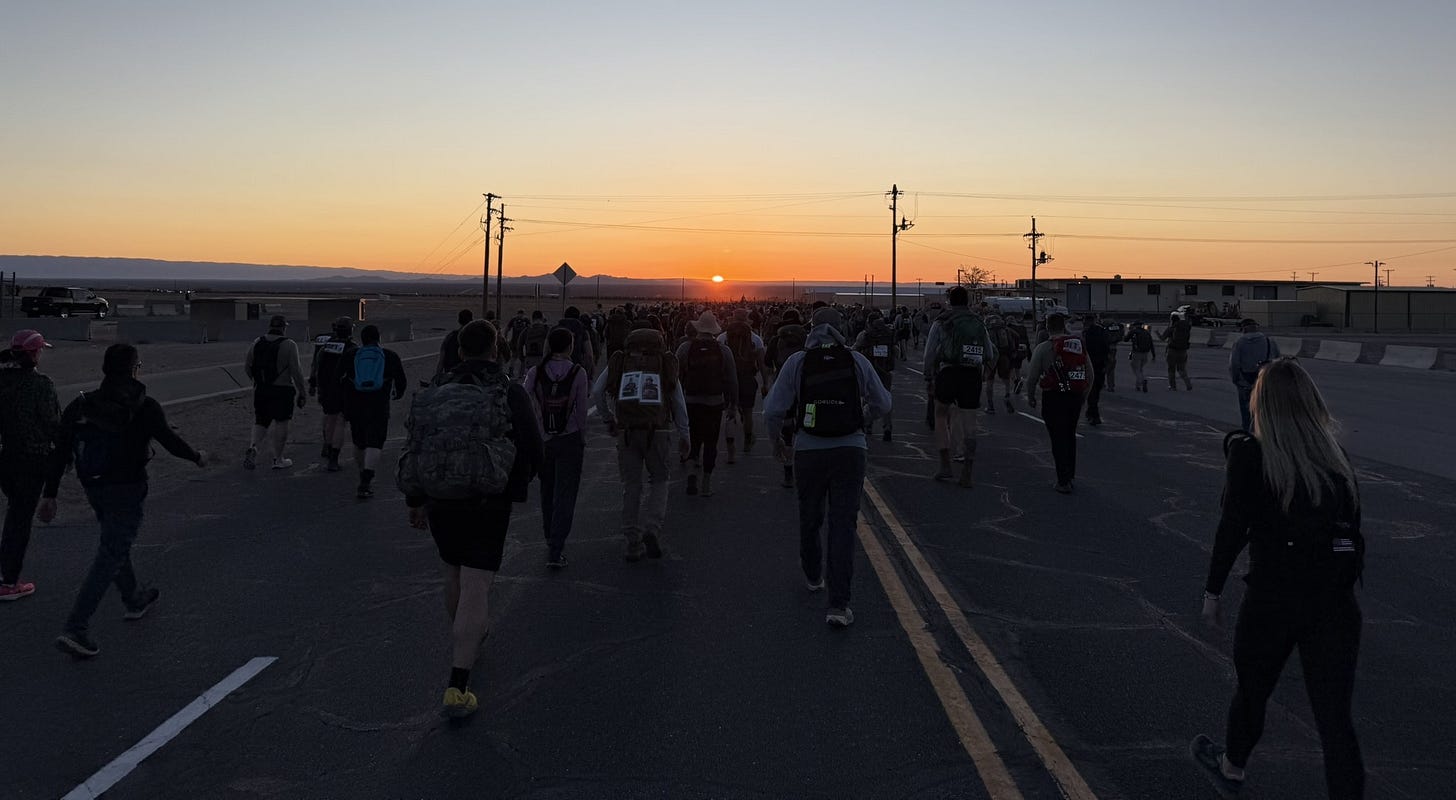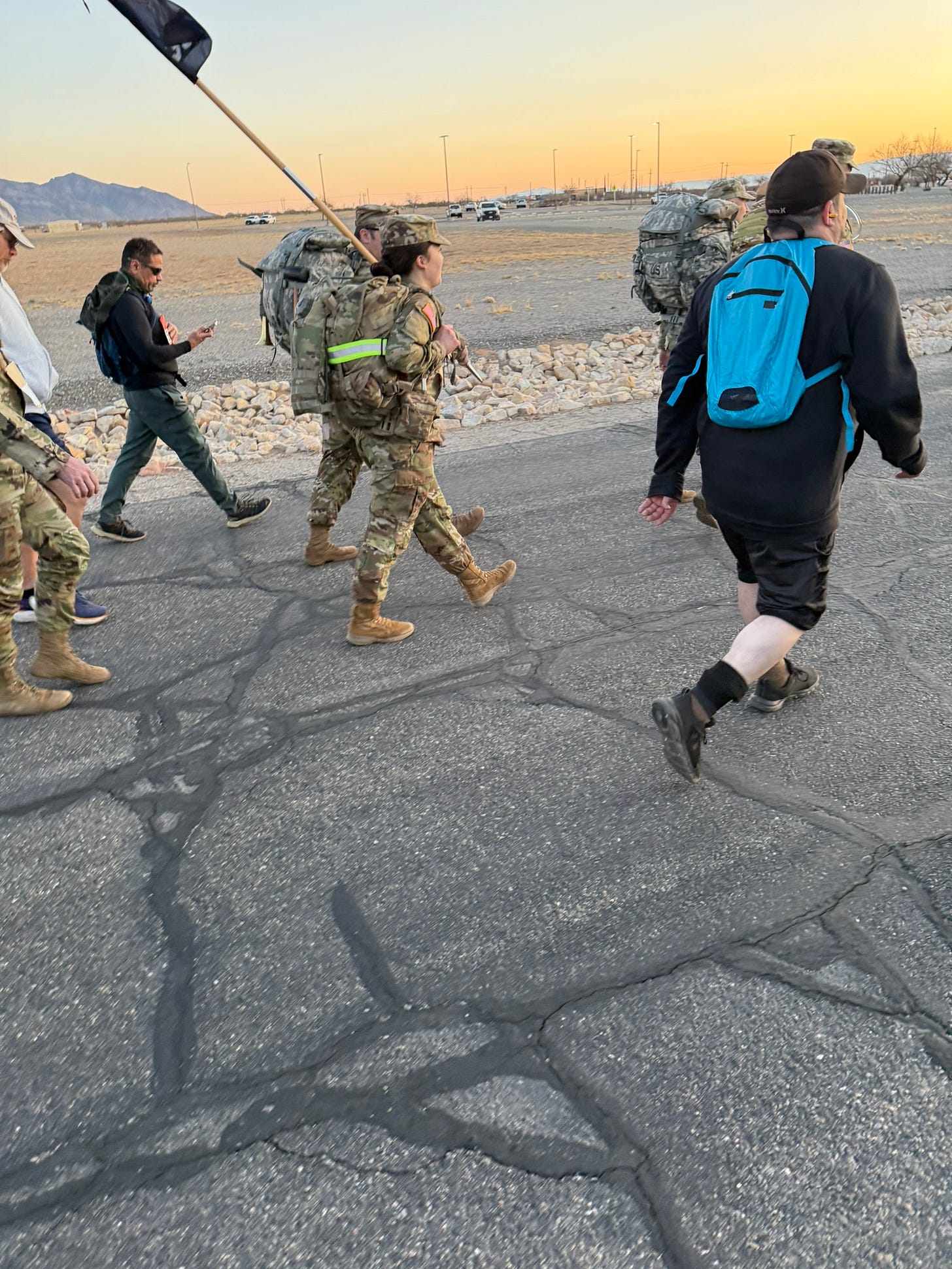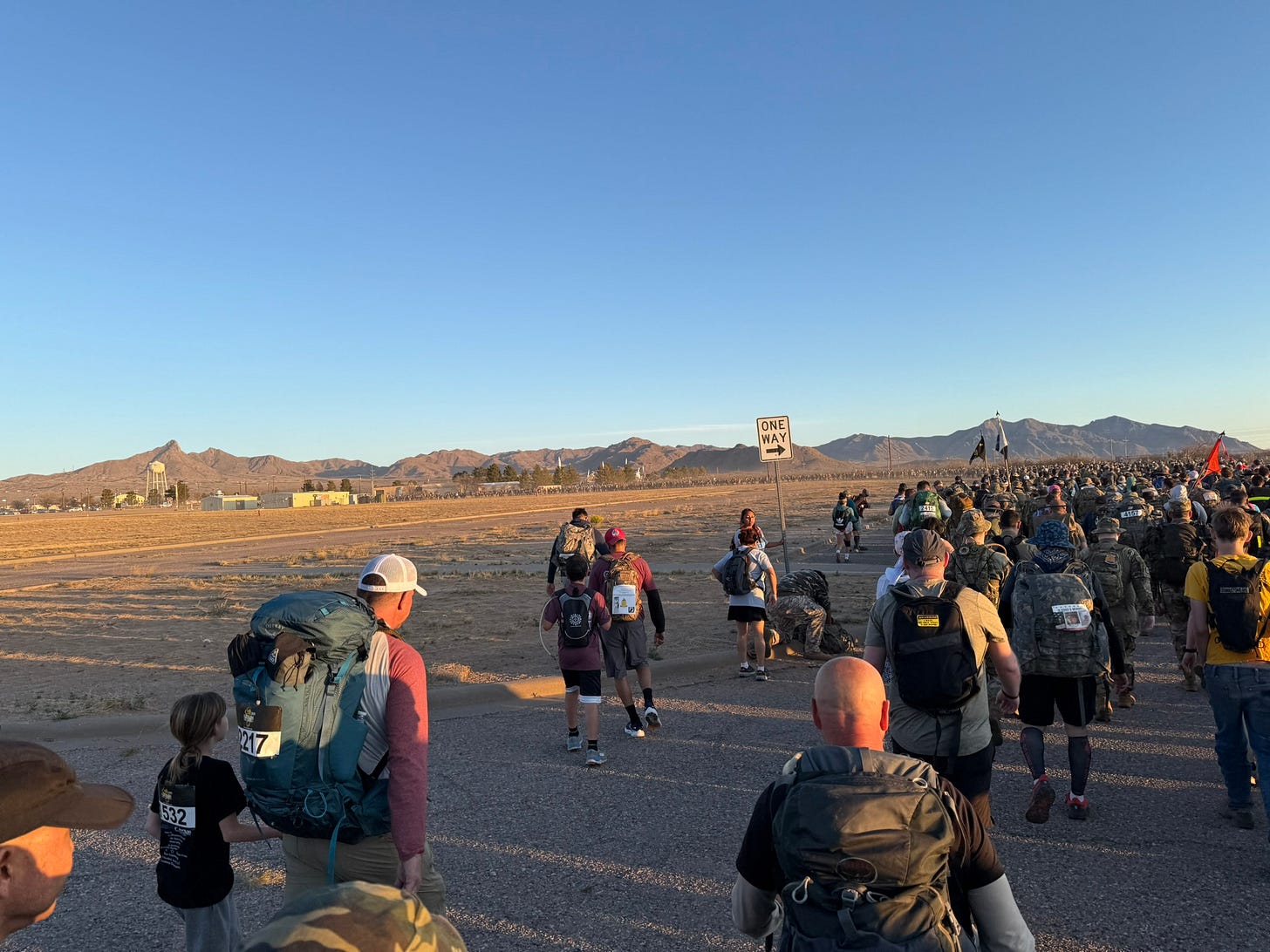Sergeant Major and I (that’s us in the picture above) did the Bataan Memorial Death March last Saturday (https://bataanmarch.com/). This march honors the service members who endured the Bataan Death March in World War 2.
Bataan Death March is the historical name for an event in the Philippines in WW2. After the battle of Bataan in the Philippines, the Japanese army forcibly transferred more than 70,000 prisoners of war (Americans and Filipino’s) from the Bataan peninsula to various prisoner of war camps. The typical distance to a camp was 65 or 70 miles.
During the transfer (the death march), thousands of Filipino and American service members died from injury, from disease, and from Japanese abuse/killings. Estimates of deaths during the march range from a few thousand to several tens of thousands. The Japanese did not keep accurate records.
Thousands more died after they arrived at the prisoner of war camps. Thousand more after that died on the “hell ships” transferring them to Japan. The hell ships are an abysmal historical event in themselves.
The Bataan Memorial Death March is a marathon length event at White Sands Missile Range in New Mexico. For the event, you can run, walk, or walk with a ruck. There are several divisions. Sergeant Major and I chose (unwisely, you might justifiably say) to do the civilian heavyweight division. In the civilian heavyweight division, you have to carry a ruck that weighs at least 35 pounds. The ruck is subject to inspection (and weighing) at the end. Rocks and sand are not permitted as weight in the ruck since you could ditch those at the start and replenish them at the end.
It is a big event. There were about 6,000 (six thousand) starters for the event (all divisions). There were not 6,000 finishers. As an indicator, there were 28 starters in my cohort. My cohort was civilian heavyweight aged 60 to 69. We had 19 finishers so we lost just about a third of those who started. The other cohorts (a cohort is a combination of a division and an age class) seemed to be similar. In each cohort, twenty to thirty percent of the starters did not finish.
The march is tough. The altitude ranges from 4,00 feet up to 5,300 feet. It is done in fairly rugged desert terrain with sections of deep sand. If that was not enough, I made some mistakes that made it worse.
I thought I could get one more event out of a pair of worn-out boots. Big mistake. I finished with a deep bruise on my right heel pad that left me hobbling around for several days. I threw those boots away and I now have a replacement pair.
I did not carry any nutrition (Gu’s, carbs, bars, or similar) with me. Big mistake. By the end of the walk, I was in a deep energy deficit.
By far, my biggest mistake was inadequate conditioning prior to the walk. We all know that it is possible to gut through an event like this with inadequate conditioning but it hurts a lot.
Looking past the difficulty of the march, it was fun in some ways. The desert environment was interesting if rugged. The participants were extremely diverse and interesting. And the organizers did an excellent job of recognizing the service members who endured the actual Bataan Death march.
That is the point, after all. Remembering and honoring the service members who endured the death march is the point. They suffered in ways that are hard to comprehend. Honoring them is important.
Here are a couple more pictures of the event. I recommend doing it even though I made it more difficult than was required.
This article is on X ( @keith_rutledge ), on my Substack (keithrutledge.substack.com), and the stage description is in the match documents on Practiscore.
I write about shooting, guns, and tactical competitions. Read my book “Understanding the AR-15 and AR-10” – available on Amazon at Understanding the AR-15 and AR-10

